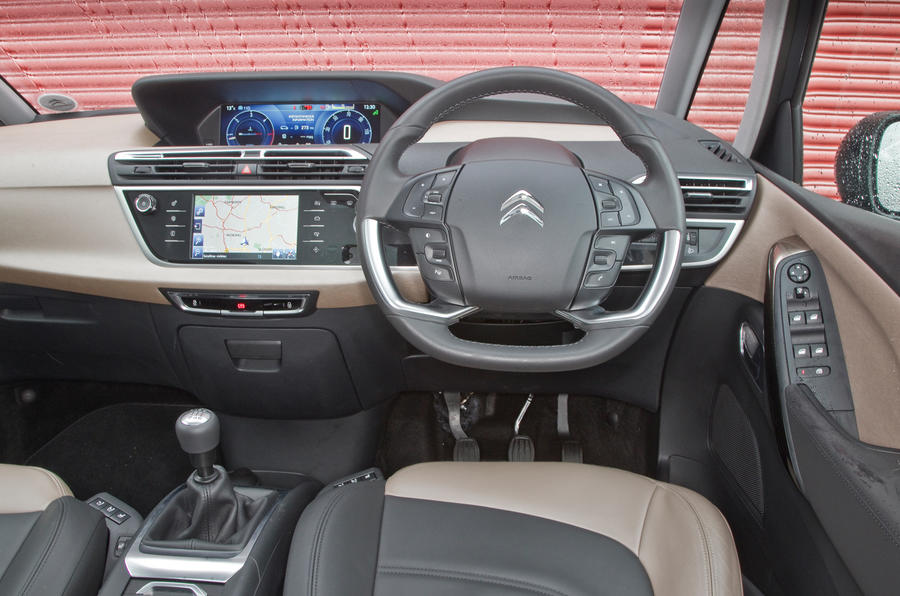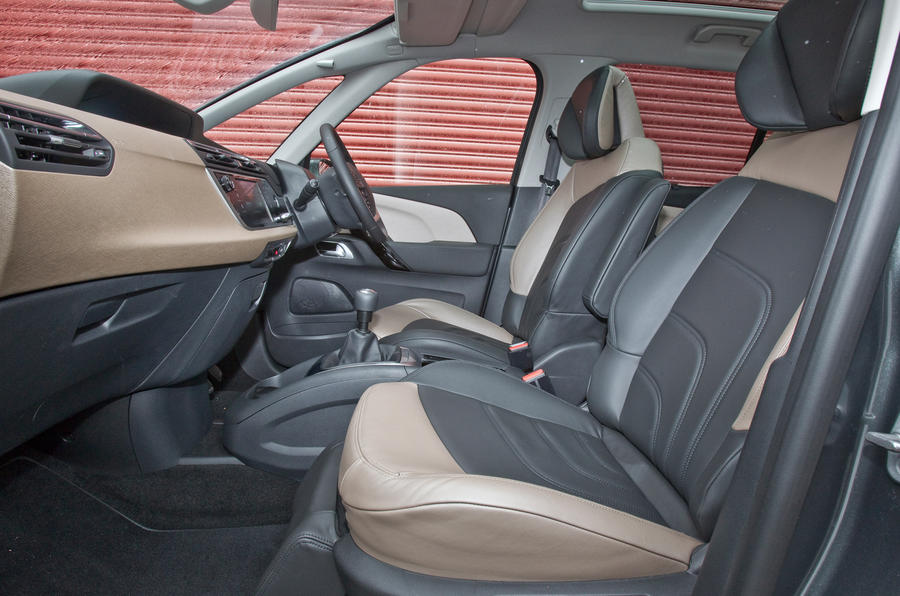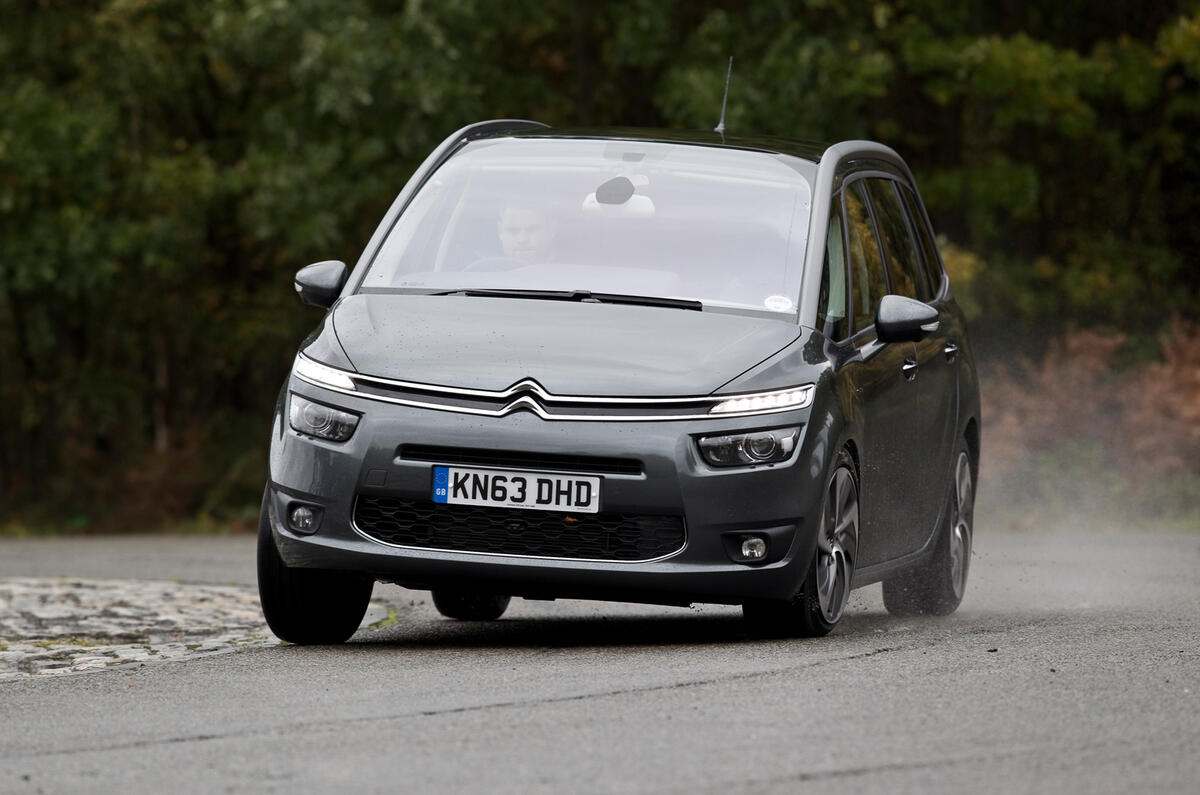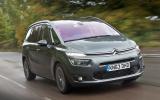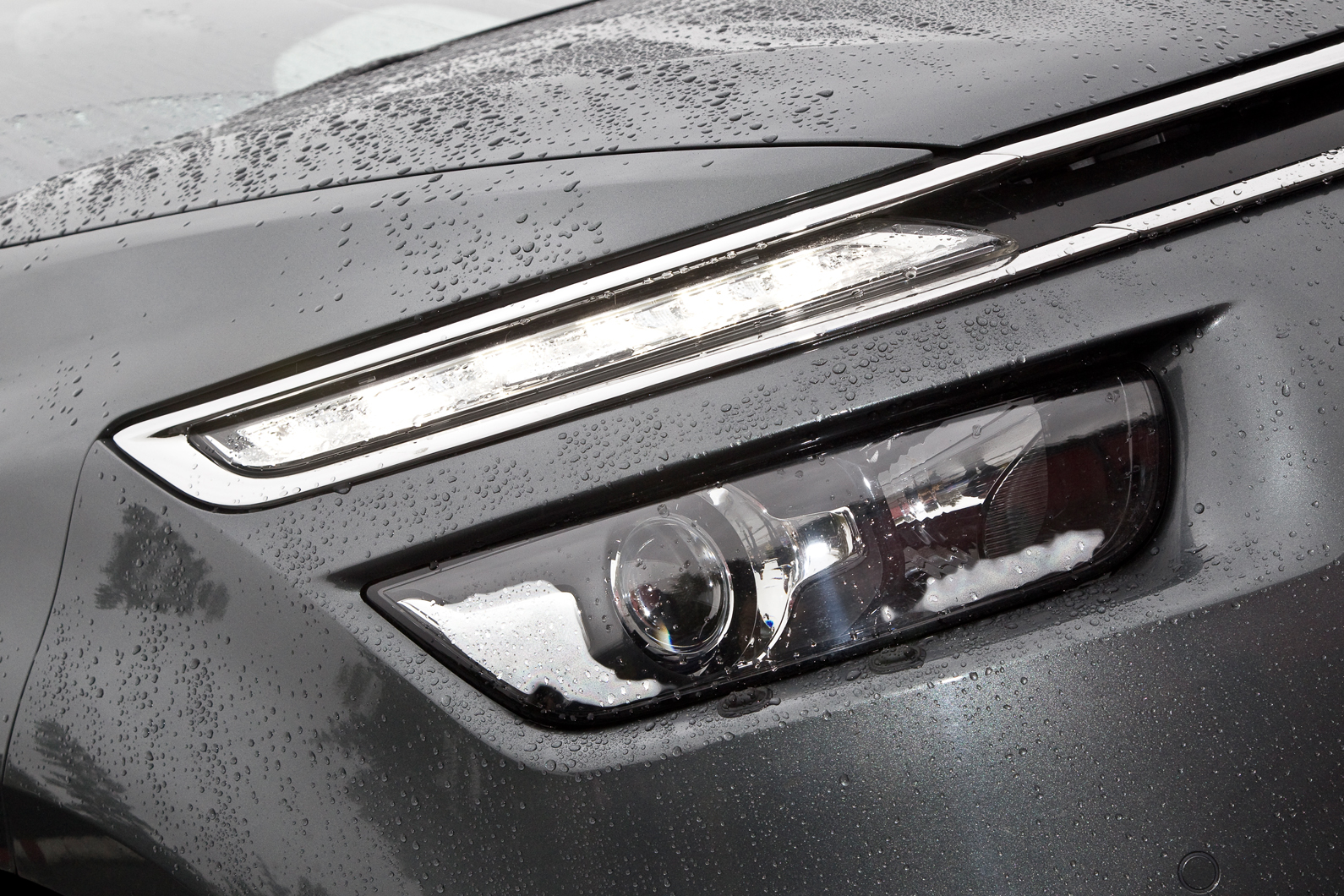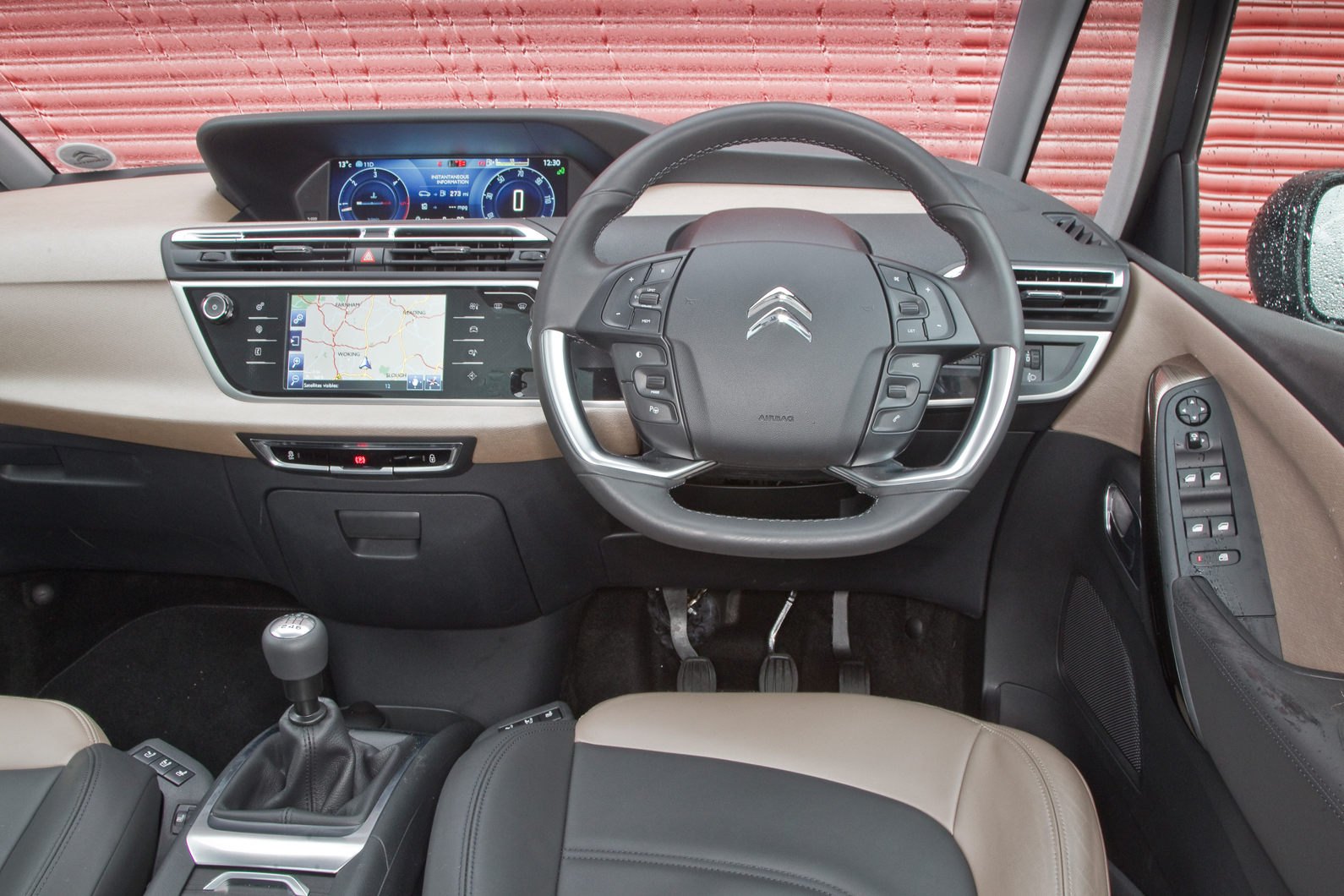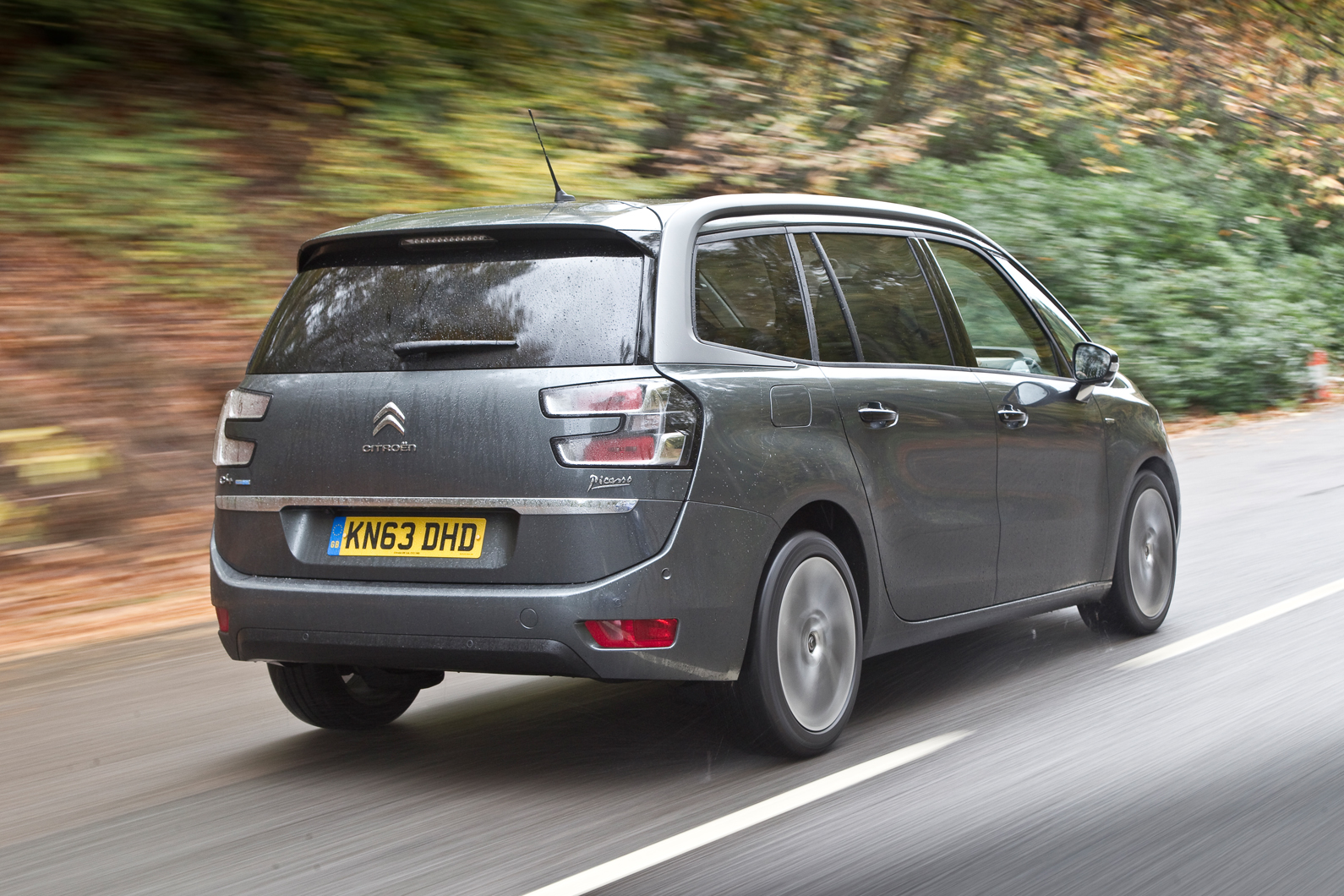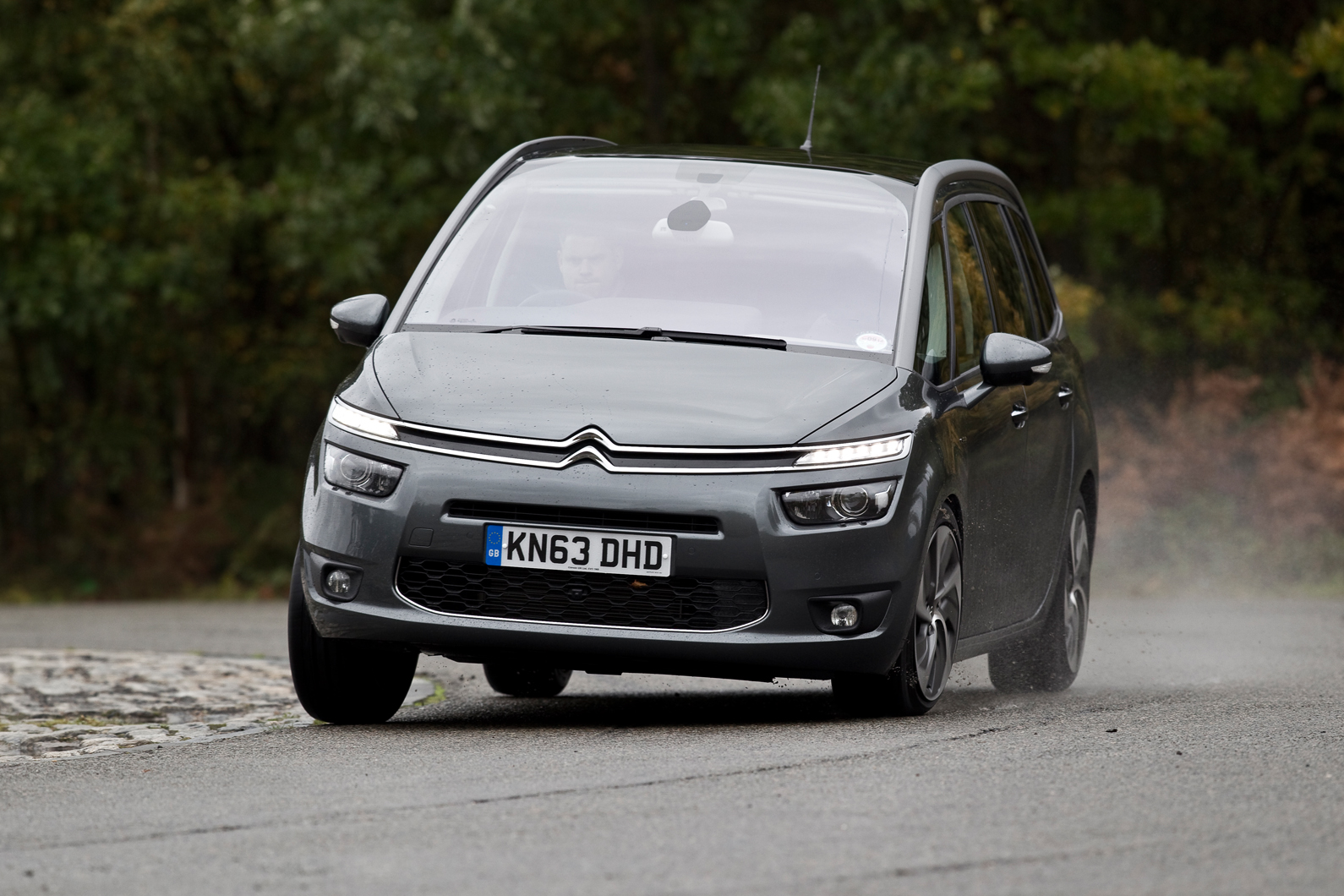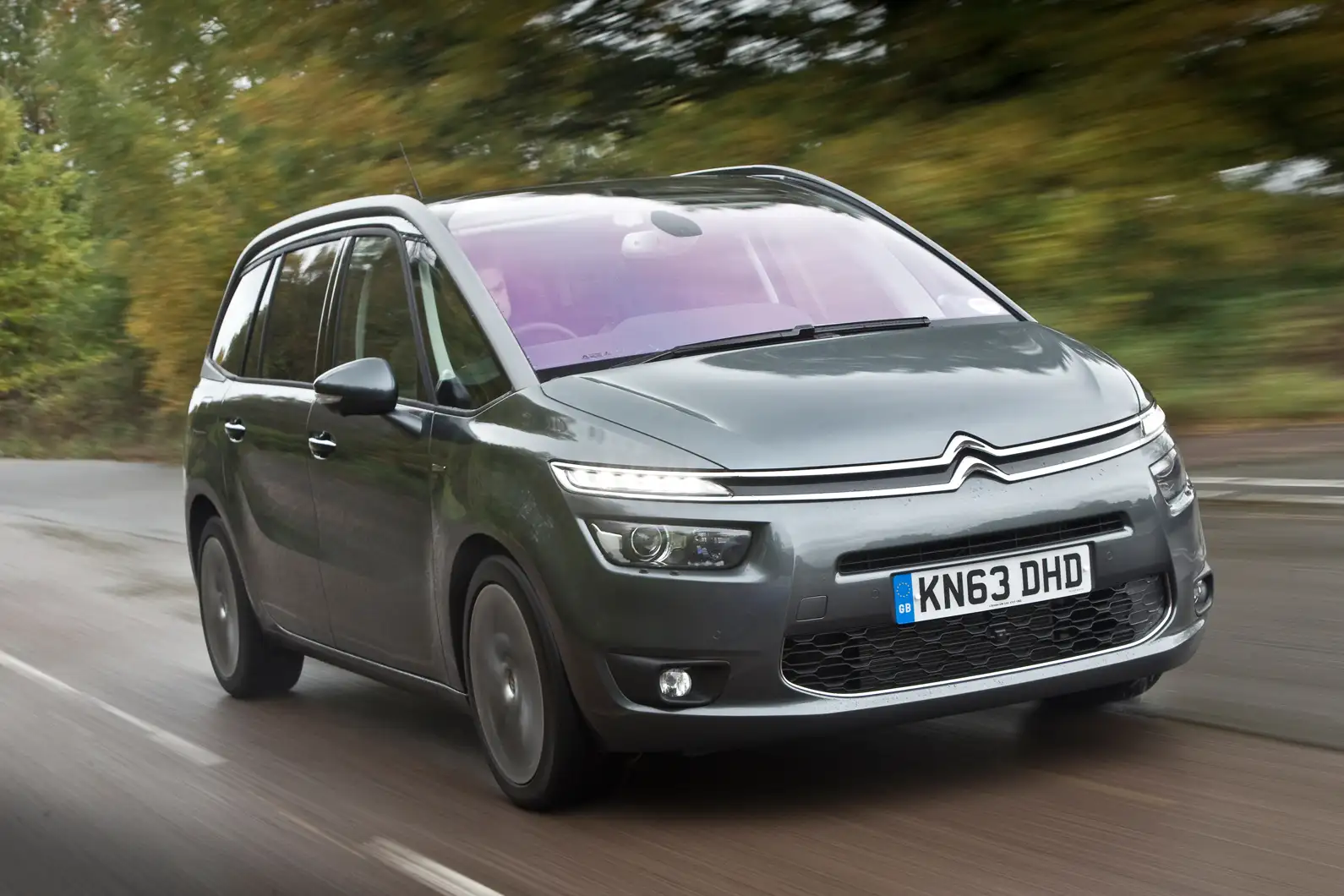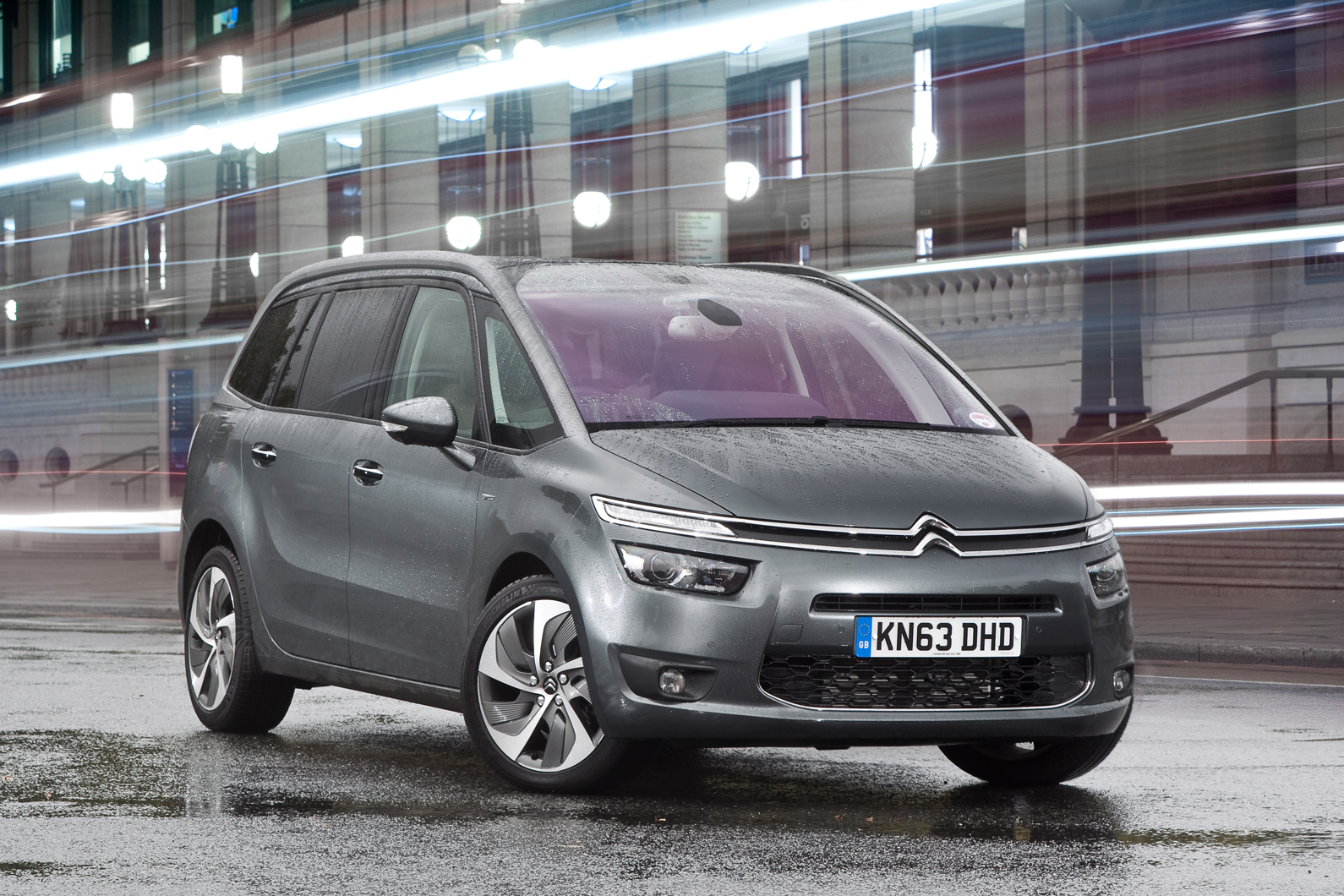Departure from convention has become the convention in the medium-size MPV design textbook, but that’s in no small part thanks to the popularity of the quirky original Xsara Picasso, a car to whose interior this Citroen C4 Picasso pays homage.
But this is not all that Citroën had in mind, and you can tell because the eccentric touches appear on a classier and more upmarket canvas than we’re used to. This is an MPV that does ‘plush’ at the same time as ‘peculiar’ – and in all but one or two places it does both well.
A Picasso wouldn’t be a Picasso without an instrument panel offset to the centre of the fascia. But no Picasso that we’ve seen before has featured a customisable colour LCD screen in place of normal dials, a chic-looking two-tone dashboard, or air vents, steering wheel grips and centre stack zones edged in ritzy satin chrome.
There are three trims to choose from - Touch Edition, Feel and Flair. Entry-level models come with 16in alloy wheels, hill start assist, cruise control, a panoramic windscreen and rear parking sensors as standard on the outside, while inside there is dual-zone climate control and a 7.0in touchscreen infotainment system complete with DAB radio, Bluetooth and USB connectivity all included.
Upgrade to a Feel adorned model and you will find luxuries such as front parking sensors, sat nav, Citroën's 12in configurable display, massaging front seats and 17in alloy wheels, while the range-topping Flair model adds a self parking mode, blind spot monitoring, automatic opening tailgate and a panoramic sunroof.
You perch fairly high in the driver’s seat, as you’d expect, but the controls are well placed and generously adjustable and the front seats are large and comfortable – our only gripe with them being a lack of adjustment in the headrests. The cabin is bathed in light via both an extended windscreen running back above your head and a large panoramic glass roof.
Meanwhile, practical features, such as storage cubbies and picnic tables with neat retaining straps, abound. Space in the second row of seats is generous by class standards and legroom is particularly good.
Sitting three adults side by side will still be a squeeze and any adult in the third row won’t thank you for being asked to ride back there. But those limitations are common for the medium-size MPV class and we wouldn’t criticise the Picasso for imposing them.
The standard Bluetooth worked well for our testers, pairing quickly and providing a reliable connection with good call quality. The Picasso’s bigger trick is the optional Multicity Connect, which offers 3G mobile connectivity to applications such as Trip Advisor, ViaMichelin, Facebook and an email reader. It’s quite expensive, though.
The DAB tuner isn’t the most intuitive to use, but reception seems good. A six-speaker set-up is the only stereo offered. It’s nothing special, but its power and clarity are more than adequate. The Multicity Connect system adds games and social media functionality into the mix.
The Citroën's eMyWay multimedia system set-up has full European mapping, comes standard with Feel-spec cars and also gives you a second USB input. Not the most detailed factory system we’ve tested, but relatively quick to program.







